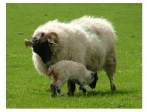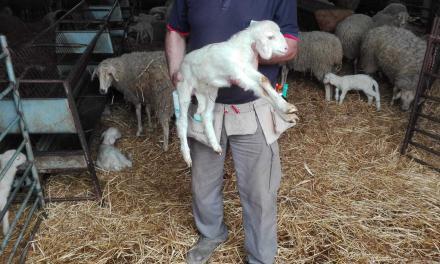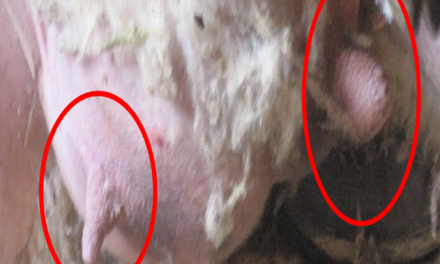This post is also available in:
![]()
![]()
![]()
![]()
Information on how to foster lambs to surrogate ewes
Fostering of lambs to surrogate ewes
|
Why Foster lambs? |
- Fostering is a common technique to allow abandoned or surplus lambs to be reared by a surrogate ewe.
- When ewes give birth they form an exclusive attachment to their own lambs within 1-2 hours of lambing. This is based on the ewe learning the smell ‘signature’ of her lamb. After the ewe has learnt the smell of her lamb she is able to recognise her own lambs (initially on the basis of their smell, then by appearance and voice as well), and will reject any other lambs that are not her own.
- This can make fostering very difficult, as ewes will often know that this is not her lamb and will not want to take care of it.
|
Fostering Methods |
A number of different methods have been tried to foster lambs onto ewes. Broadly these consist of variations on making the lamb smell in a way that might make it acceptable to the foster ewe, or physical restraint or other methods of preventing the ewe from rejecting the lamb. The following methods have been suggested to facilitate fostering (some are also described within the SheepNet Knowledge Reservoir) :
- Skinning a dead lamb and placing the fleece onto the lamb to be fostered to make this lamb smell like a lamb that the ewe has already bonded to (https://eurosheep.network/node/240)
- Transferring the odour of the ewe’s own (dry) lamb to the foster lamb using fabric coats or jackets
- Wet fostering methods where the amniotic fluids of the lambing ewe are transferred to the foster lamb (https://eurosheep.network/node/210)
- Various methods to mask the odour of the foster lamb with novel odours such as oil, wax, perfume, salt or other smells (https://eurosheep.network/node/225; https://eurosheep.network/node/241).
- Stimulation of the vagina and cervix of a recently lambed ewe (approximately 6 hours after delivery) to mimic the birth process
- Restraining the ewe in fostering stocks, or a crate to prevent her rejecting the foster lamb (https://eurosheep.network/node/186)
- Placing a bucket on the head of the ewe to prevent her rejecting the foster lamb (https://eurosheep.network/node/214).
- Scaring the ewe with a dog in an attempt to make her bond with the lamb (https://eurosheep.network/node/242).
|
What works best? |
- Mortality of foster lambs is higher than mother-reared lambs, choosing the right method is important
- In a survey of UK sheep farmers, wet fostering was the most preferred method
- Methods that rely on altering the smell of the lamb work more closely with the ewe’s own biology (wet fostering, skinning dead lambs, masking or transferring odours) and tend to be more successful.
|
Wet fostering |
Skinned dead lamb |
Masking smells |
|
Lamb made to smell of the ewe’s own amniotic fluids. May be used in combination with cervical stimulation. Works with the biological processes of bonding in the ewe |
Ewe has already formed a smell memory for the dead lamb. By making the foster lamb smell like her own lamb the ewe is willing to accept it.
|
This method attempts to ‘fool’ the ewe into not being able to identify that the lamb is not her own |
|
|
|
|
|
Usually 100% effective |
95-100% effective |
20-80% effective |
|
Foster onto single-bearing ewes only; need to be present at lambing of the foster ewe |
Only applicable to ewes that have lost a lamb |
Some odours are more effective than others; can take several hours or days for the lamb to be accepted
|
|
Recommended as preferred method |
Recommended for ewes with a dead lamb |
Recommended if wet foster is not possible |
|
Foster crates/cages |
Preventing the ewe from smelling the lamb |
Using a dog |
|
Prevent the ewe from smelling the lamb and rejecting it so allows the lamb to suck |
Use of a collar (e.g. bucket) around the neck of the ewe to prevent her being able sniff the lamb and identify it as not her own |
Placing the ewe and her lamb in the presence of a dog in an attempt to induce bonding |
|
|
|
|
|
Very variable success rates |
Success unknown |
Success unknown |
|
Ewes may appear to accept lambs whilst restrained, allowing sucking, but will reject the lamb once released from restraint; good pen hygiene is paramount; only use for short periods due to welfare issues with the ewe being restrained |
Allows ewe freedom to move unlike restraint; ewe may still reject lambs when collar is removed; care needs to be taken to ensure the ewe can still graze/feed properly and that sores do not develop on the neck |
No scientific evidence to support this method |
|
Use only if other recommended methods are not possible |
|
Not recommended |













